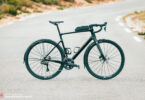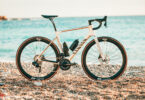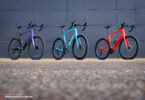With the ARC8 Eero, the young Swiss company aim to stir up the gravel bike market. We had the opportunity to test their brand new bike extensively before its launch. How does it compare to the competition?
A quick overview of this group test: The best gravel bike 2021
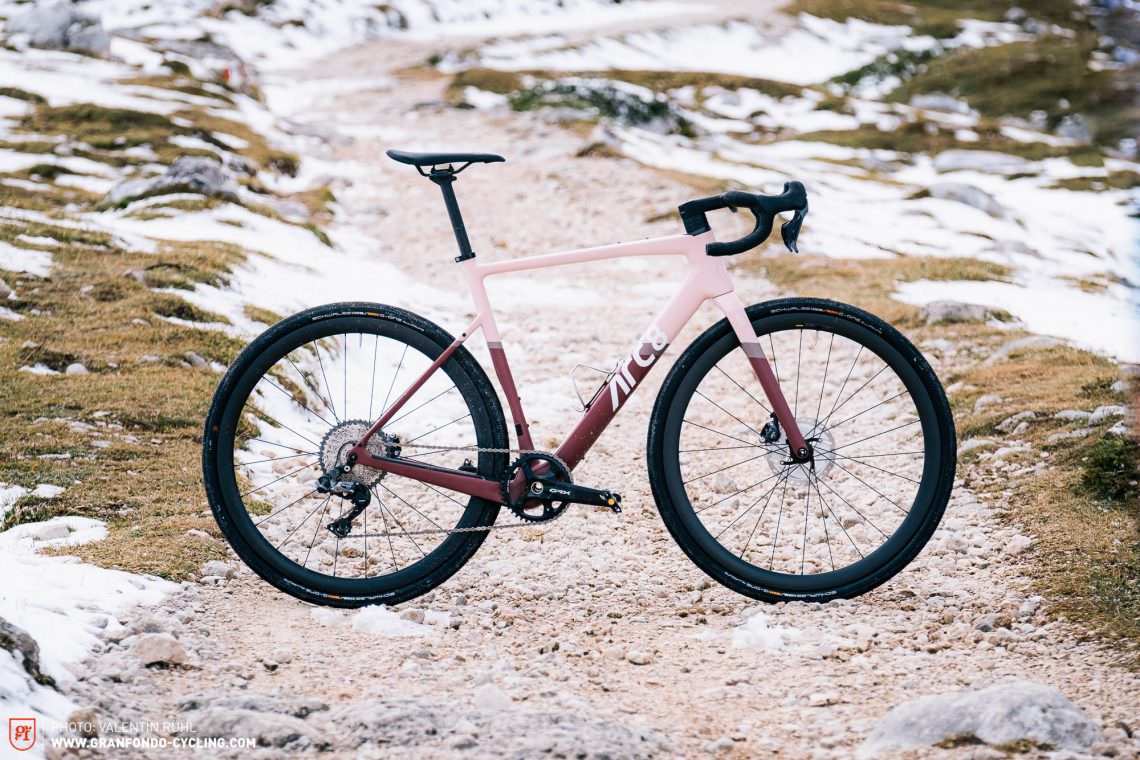
The ARC8 Eero isn’t just here to add a breath of fresh air to the gravel sector with its fancy paintwork – the Swiss bike also has a lot of clever tech to offer. The carbon frameset comes with a threaded BSA bottom bracket, bosses for up to four bottle cages as well as mudguards at either end and a specially developed cockpit. The extra-wide handlebar clamp allows the cables to be routed internally via the ARC8 ICH stem. The four Allen bolts, there backward orientation and small size mean mounting the handlebar requires you to be a bit more careful than with conventional solutions, but it delivers both form and function. After entering the stem, all cables remain hidden inside the frame. We only heard the cables rattle inside the frame faintly on very rough surfaces. The 1×11 Shimano GRX RX815 Di2 groupset is an excellent fit for the Eero. In combination with the 11–42 t cassette, the 40 t chainring requires a lot of physical effort from the rider on steep climbs but it’s fine for the bike’s more competitive aspirations.
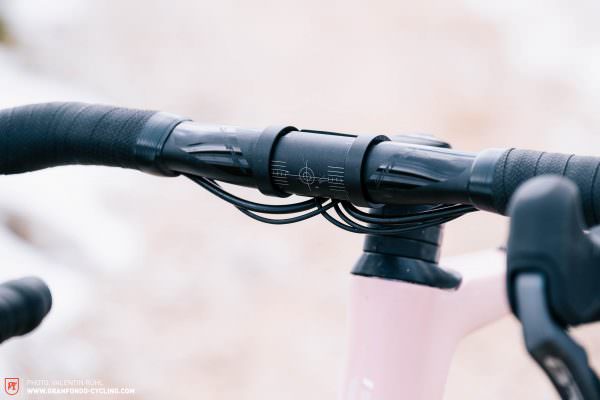
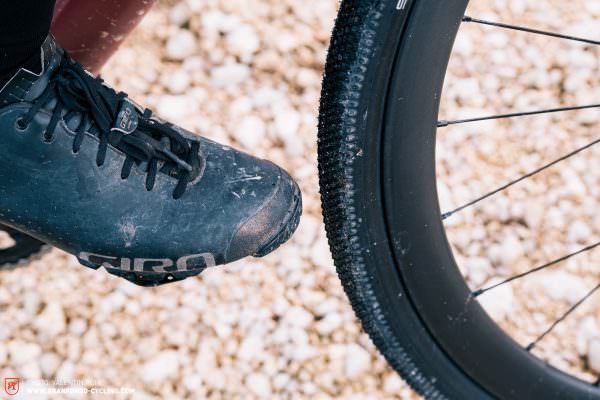
ARC8 Eero
€ 4,175
Specifications
Seatpost Faserwerk Seatpost 0 mm
Brakes Shimano GRX RX810 160/160 mm
Drivetrain Shimano GRX RX815 Di2 40 (11–42)
Stem ARC8 ICH Stem 100 mm
Handlebar Zipp Service Course SL-70 XPLR 420 mm
Wheelset ARC8 C38
Tires Schwalbe G-One Allround 40C
Technical Data
Size S M L XL
Weight 8.44 kg
Wheelsize 700C
Specific Features
Self-engineered stem with wide clamping area and cable-routing
bolting points on the topside of the toptube and the downside of the downtube
bolting points for a mudguard
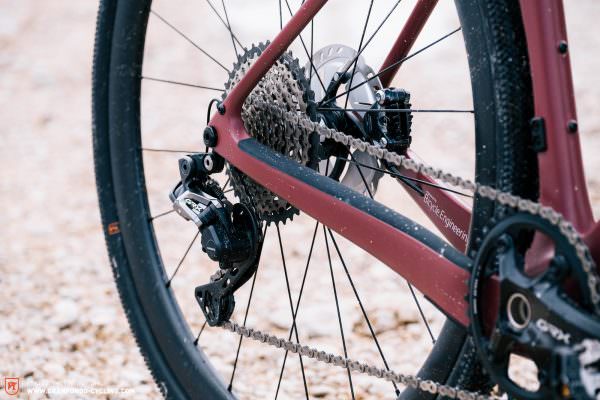
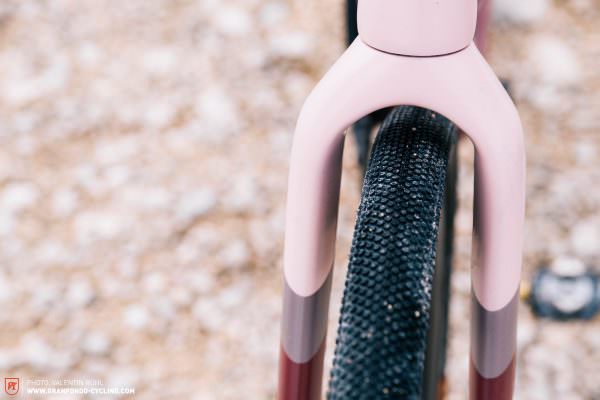
| Size | S | M | L | XL |
|---|---|---|---|---|
| Seat tube | 510 mm | 550 mm | 570 mm | 600 mm |
| Top tube | 525 mm | 545 mm | 564 mm | 583 mm |
| Head tube | 137 mm | 157 mm | 170 mm | 197 mm |
| Head angle | 70.0° | 71.0° | 71.0° | 71.0° |
| Seat angle | 73.5° | 73.5° | 73.5° | 73.5° |
| Chainstays | 420 mm | 420 mm | 420 mm | 420 mm |
| BB Drop | 75 mm | 75 mm | 75 mm | 75 mm |
| Radstand | 1,002 mm | 1,012 mm | 1,032 mm | 1,053 mm |
| Reach | 364 mm | 376 mm | 388 mm | 400 mm |
| Stack | 545 mm | 568 mm | 593 mm | 618 mm |
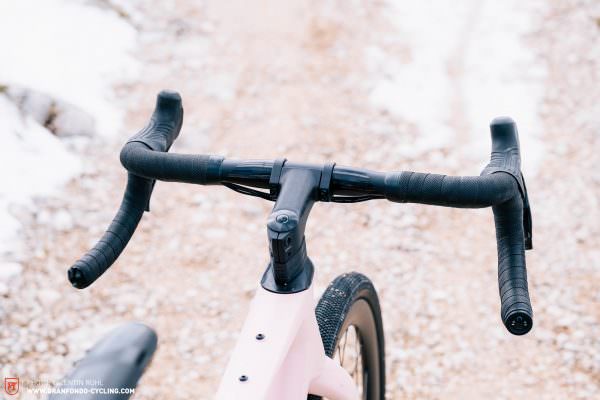
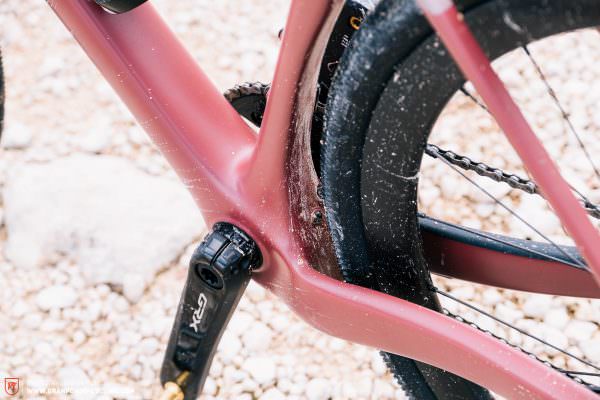
A really fun bike for high-intensity, fast all-road and gravel rides! Configured as it is here, the Eero lacks the comfort necessary for long-distance adventures.

Shorts Jeans Second Hand | Socks VOID Socks 16 | Shoes Giro Empire VR90
For the wheels you get ARC8 C38 carbon rims laced to DT Swiss 350 hubs. Our test bike came fitted with Schwalbe’s 700 x 40C G-One Allround tires. You could happily exchange these for higher-volume slicks or semi-slick tires to make the overall system a little faster and more comfortable, given the maximum tire clearance of 700 x 50C. In size M, this configuration of the Eero weighs 8.44 kg and costs € 4,175.
Out of the gate, it’s clear that the Eero just wants to go! It feels light-footed and direct as it’s brought up to speed and it’s an excellent all-rounder for going fast both on flat terrain and in the mountains. The only drawback is that when the road gets bumpy, the Schwalbe tires and the comparative lack of compliance mean that the bike will occasionally lose traction, not always transferring your braking or pedalling power to the ground.
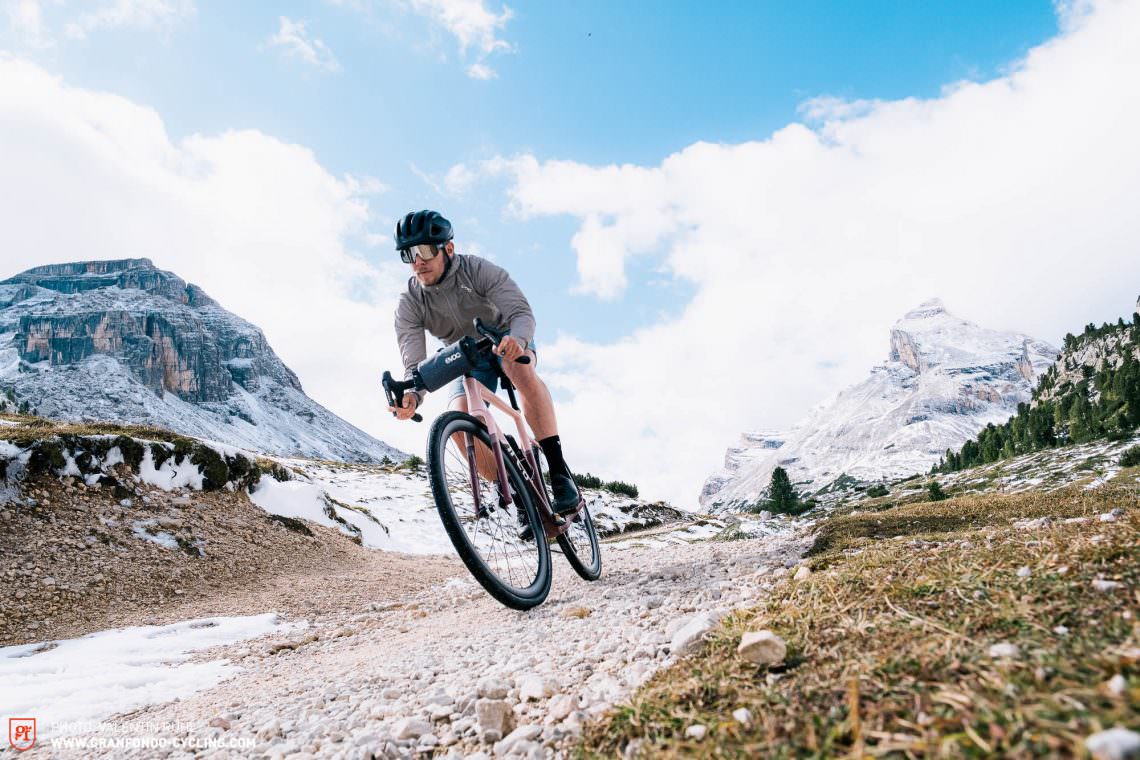
The wide clamp of the stem, the aluminium Zipp Service Course SL-70 XPLR handlebar and the Faserwerk carbon seat post don’t add to the bike’s comfort. The bike’s vibration damping is okay but overall rider comfort isn’t on par with the other bikes on test. However, the good thing about the level of feedback is that in rough terrain, the bike will quickly let you know what you’re getting into, letting you be prepared. The handling of the ARC8 has a lively and playful character, which becomes increasingly stable as you pick up speed. At slower speeds, the agility of the front and rear are well matched. When riding fast, the front tends to respond to input from the rider quicker, with the rear lagging behind slightly. At high speeds, you need to be firm with the bike in order to navigate a corner without having to correct your line halfway through. However, this behaviour doesn’t necessarily compromise the rider’s confidence: on steep climbs and at slow speeds, the agile handling up front allows you to balance out your own body movements while the bike’s stable handling at high speed instils you with confidence.
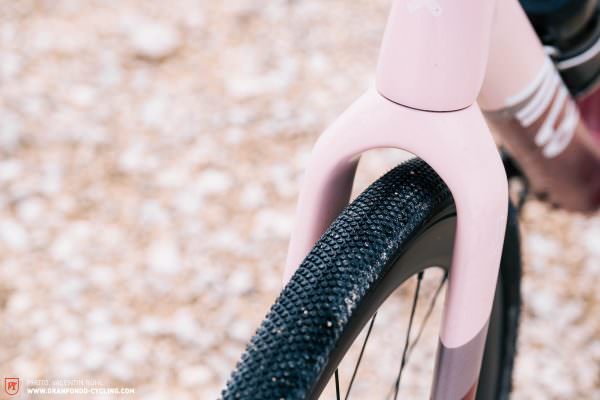
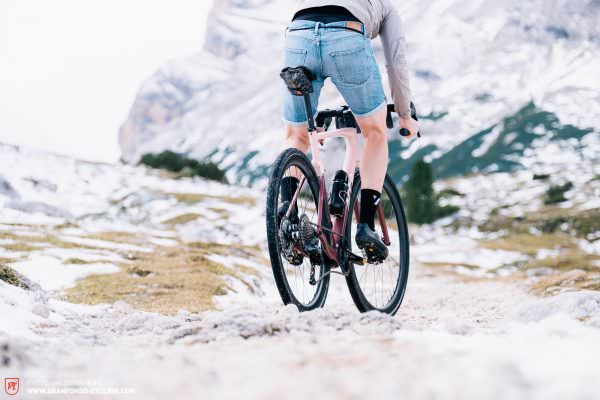
Tuning tip: higher-volume and ideally (semi-)slick tires that match the speed of the bike and generate a little more comfort
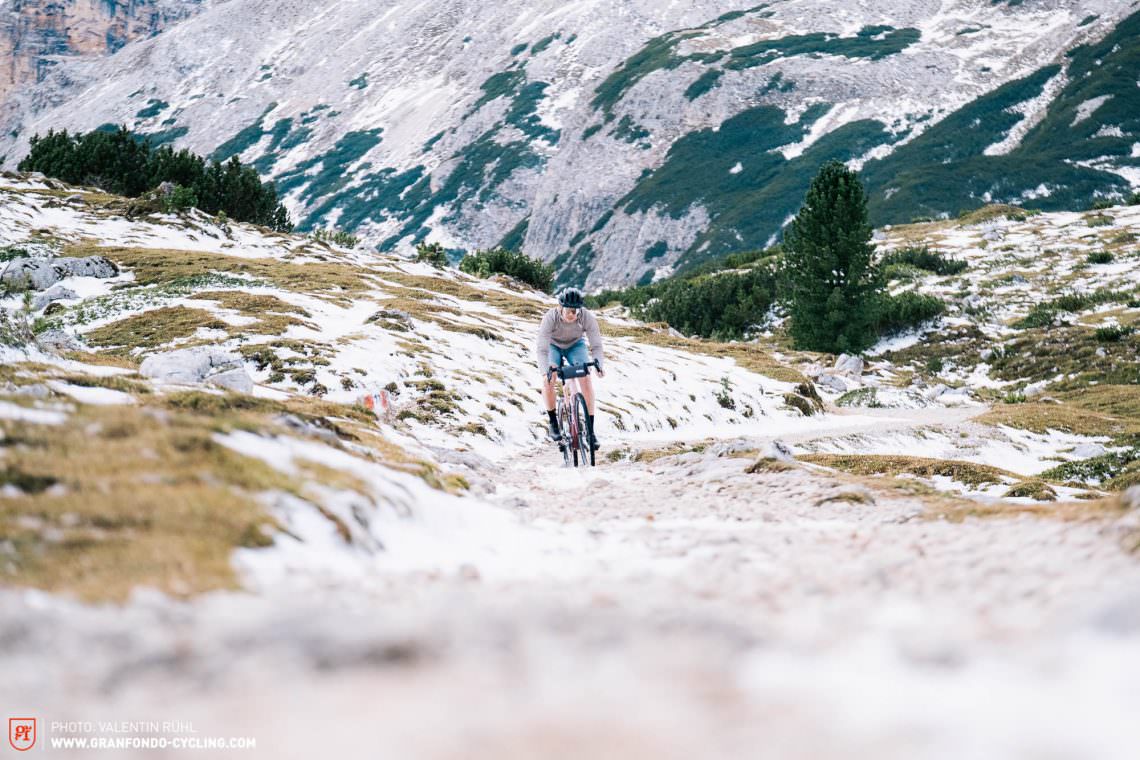
Riding Characteristics
4Agility
- cumbersome
- playful
Stability
- nervous
- confident
Handling
- demanding
- balanced
Fun factor
- boring
- lively
Comfort
- firm
- comfortable
Value for money
- terrible
- very good
Conclusion
The ARC8 Eero is a great bike for fast after-work rides. Its slightly too aggressive nature and the comparative lack of comfort with the rest of the group are its only shortcomings. As a result, it has limited suitability for long-distance use. Ambitious gravel racers will find a lively bike with plenty of tire clearance, cleverly integrated cable routing and a fresh look. Those who prefer cruising are best advised to look elsewhere.
Tops
- coherent, race-oriented concept
- quick acceleration
- fun handling at slow and medium speeds
- lots of tire clearance
- clean cable integration
Flops
- increasing chance of toe overlap for those with big feet
- the rear lags behind the front at high speed
- lack of comfort
Not sure which gravel bike you should buy? This guide will help you for sure: gravel bike buyers guide.
You wonder what tires to put on your gravel machine? We recently tested the best gravel tires against each other in our gravel tire group test.
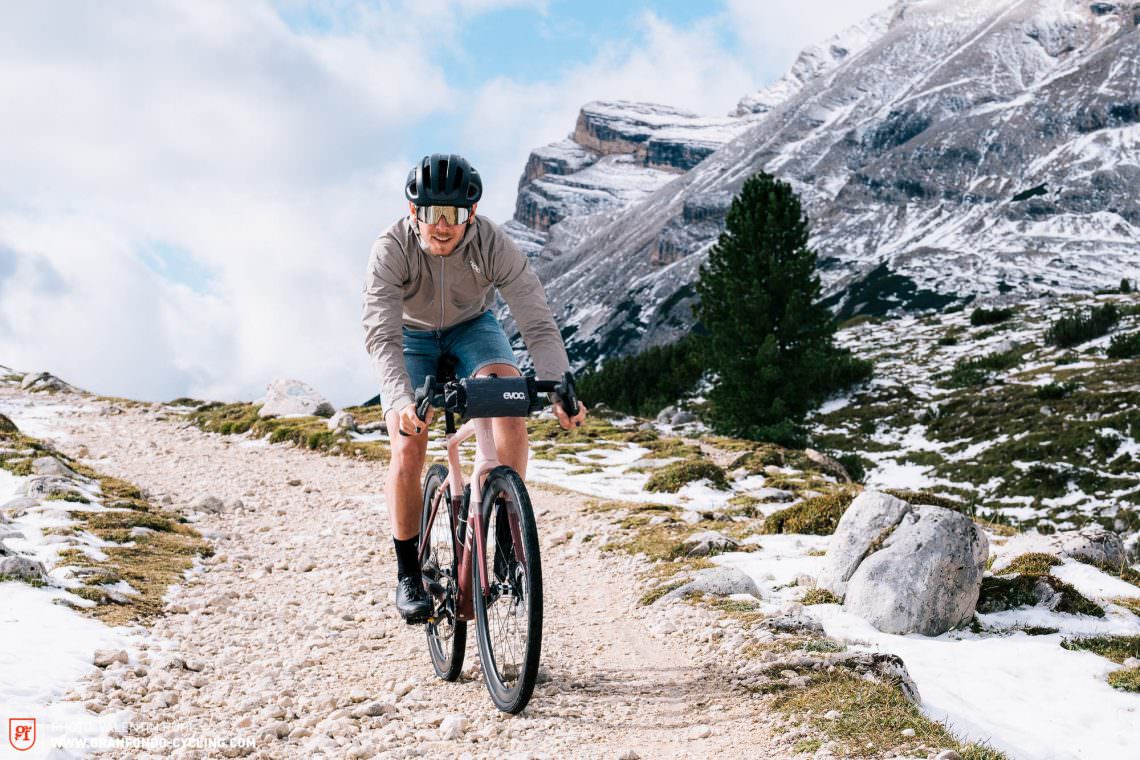
Get more information here: arc8bicycles.com
The testfield:
Get an overview of this group test: The best gravel-bike 2021 – 13 models on review
All bikes on review: 3T Exploro Race EKAR 1X13 (Click for review) | ARC8 Eero | BMC URS 01 ONE (Click for review) | Cannondale Topstone Carbon Lefty 3 (Click for review) | Canyon Grail CF SLX 8 eTap (Click for review) | Fustle Causeway GRX600 (Click for review) | OPEN WI.DE. (Click for review) | Ridley Kanzo Fast (Click for review) | Ritte Satyr (Click for review) | ROSE BACKROAD FORCE ETAP AXS LIMITED (Click for review) | ROSE BACKROAD AL GRX RX600 1X11 (Click for review) | Specialized S-Works Diverge (Click for review) | Trek Checkpoint (Click for review)
No, it’s not about perfect race tracks, it’s about efficiency. Fast, fleet-footed and efficient – those who want to speed along high-speed passages need a defined and spritely bike that accelerates with ease and efficiency. Nevertheless, reliable components are important too. We interpret “Smooth tarmac” bikes as follows: Hard efforts at high speeds with a maximum efficient bike on a consistently well-paved road. Effort-joy ratio: 80:30 (not everything has to be 100%!)↩
… also known as bike riding. Broken-up roads in the hinterland, deadlocked gravel roads, loose surfaces – sometimes muddy, sometimes bone-dry. For this, it takes bikes with super all-round, handling and wearing qualities uphill and downhill. Effort-joy ratio: 50:50↩
If you want to use your bike almost every day, you usually do not need an extremely tuned racing machine. Solid components, which are able to cope with the rigours of continuous usage in any kind of weather, are part of the basic equipment. At the same time, the bike should have practicable details: integrated fenders/assembly options, luggage racks/attachment points and a light system or at least the option of installing bike lights. The position on the bike should be rather relaxed, the overall comfort high, so that the Afterwork Ride becomes a cure and not a curse. Effort-joy ratio: 30:70↩
You can find more info about our rating system in this article: Click here! ↩
Did you enjoy this article? If so, we would be stoked if you decide to support us with a monthly contribution. By becoming a supporter of GRAN FONDO, you will help secure a sustainable future for high-quality cycling journalism. Click here to learn more.
Words: Photos: Valentin Rühl


